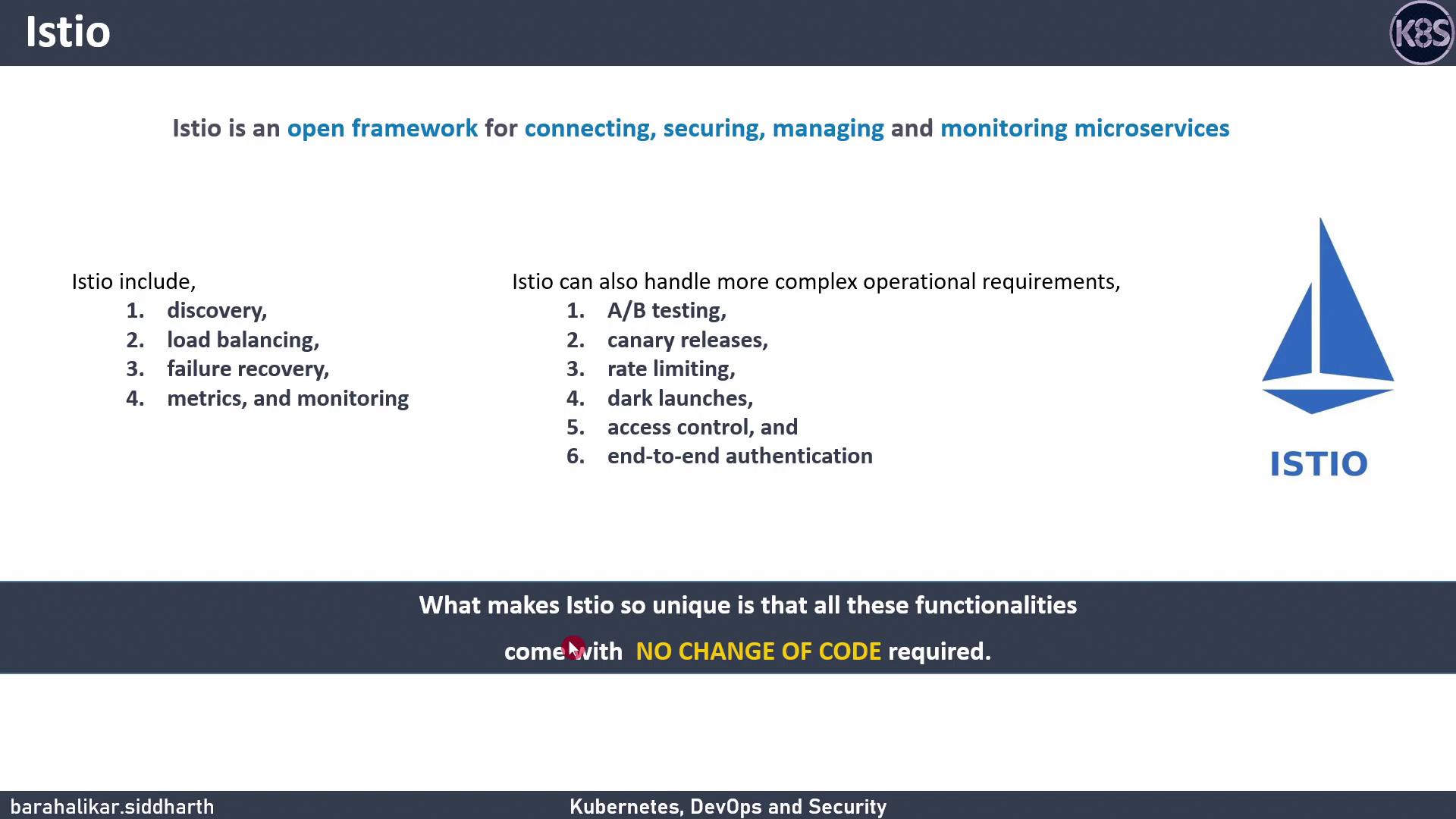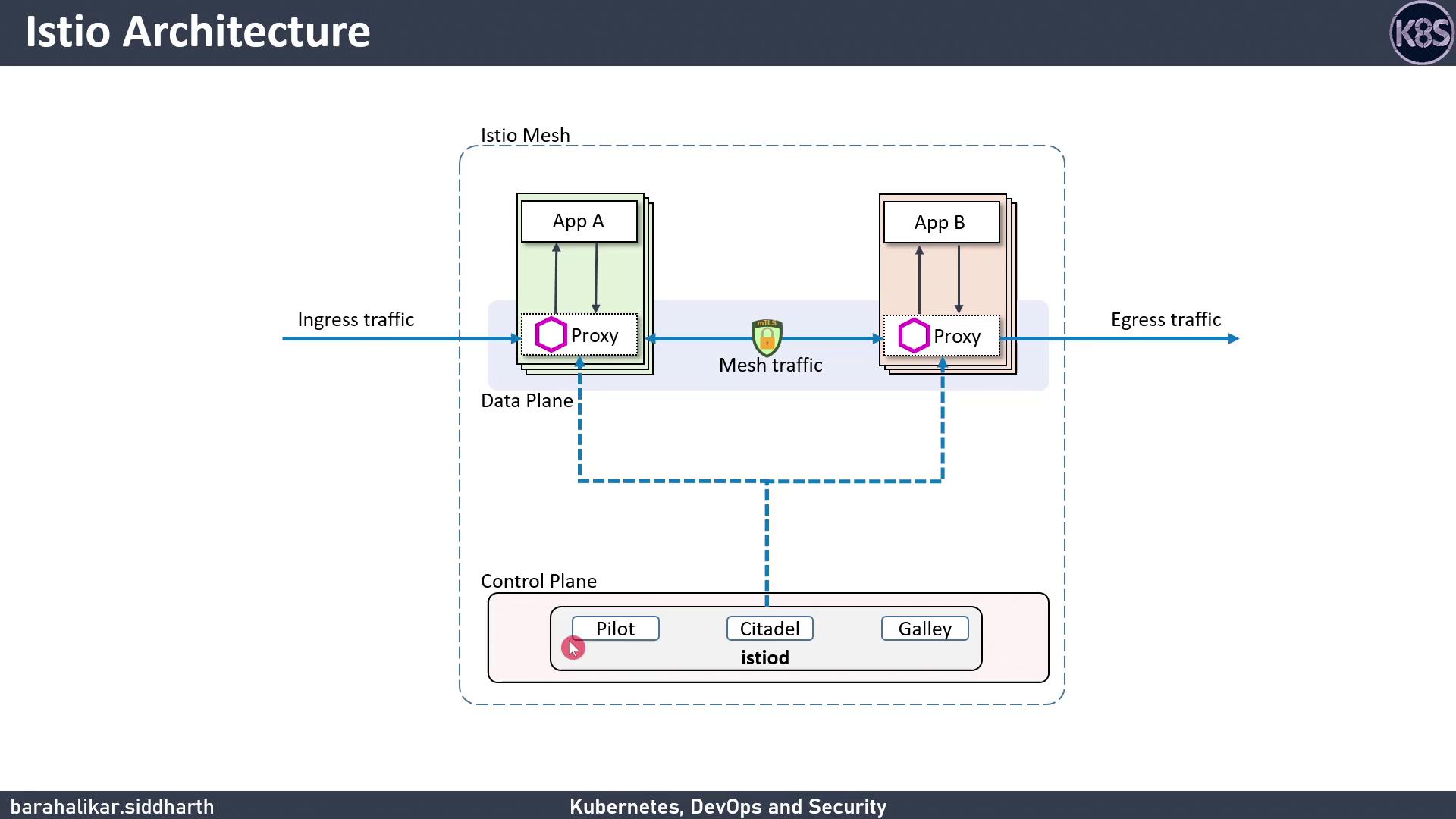DevSecOps - Kubernetes DevOps & Security
Kubernetes Operations and Security
Istio Basics
Istio is an open-source service mesh that simplifies connecting, securing, managing, and monitoring microservices. With Istio, you get:
- Automated service discovery, load balancing, and failure recovery
- Fine-grained traffic control for A/B testing, canary releases, and rate limiting
- End-to-end security with mutual TLS, policy enforcement, and telemetry
- Zero or minimal changes to application code
Note
Istio works transparently alongside any application stack (Spring Boot, Node.js, Vert.x, etc.) by injecting an Envoy sidecar proxy into each pod.

Architecture Overview
Istio’s design is split into two planes:
- Data Plane
Consists of Envoy sidecar proxies that run next to application containers. They intercept all inbound/outbound traffic, enabling metrics collection, policy enforcement, and traffic routing. - Control Plane
Configures and manages the proxies, distributing routing rules, certificates, and configuration to ensure consistent behavior across the mesh.
Envoy is a high-performance proxy written in C++ that mediates all service-to-service communication within the mesh.

Control Plane Components
| Component | Responsibility | Reference |
|---|---|---|
| Pilot | Service discovery, traffic management & routing | Pilot Docs |
| Citadel | mTLS-based authentication & certificate issuance | Citadel Docs |
| Galley | Configuration ingestion, validation & distribution | Galley Docs |
Warning
In Istio 1.5+, Galley and Pilot components were merged into istiod. Be sure to check your Istio version and configuration model.
Sidecar Proxy Pattern
When you deploy Istio, each application pod includes an Envoy sidecar. The sidecar:
- Intercepts all network traffic to/from the application
- Forwards requests to the application container and relays responses
- Encrypts traffic between pods using mutual TLS
This pattern externalizes cross-cutting concerns—tracing, metrics, load balancing, and security—out of application code.
From Netflix OSS to Istio
Before Istio, Spring Boot microservices often required embedding multiple Netflix OSS libraries:
| Netflix OSS Component | Use Case | Istio Equivalent |
|---|---|---|
| Eureka | Service discovery | Envoy + Pilot |
| Spring Cloud Config Server | Centralized configuration | Galley / Config APIs |
| Ribbon | Client-side load balancing | Envoy load-balancer |
| Hystrix | Circuit breaking & resilience | Envoy retry & circuit-breakers |
| Zipkin | Distributed tracing | Envoy + Zipkin/Jaeger plugin |
| Zuul | API gateway | IngressGateway |

Summary
Istio’s sidecar-based approach offloads critical infrastructure concerns from your code to a transparent proxy mesh. You gain unified traffic management, security, and observability with minimal disruption to your existing workflows.
Links and References
Watch Video
Watch video content